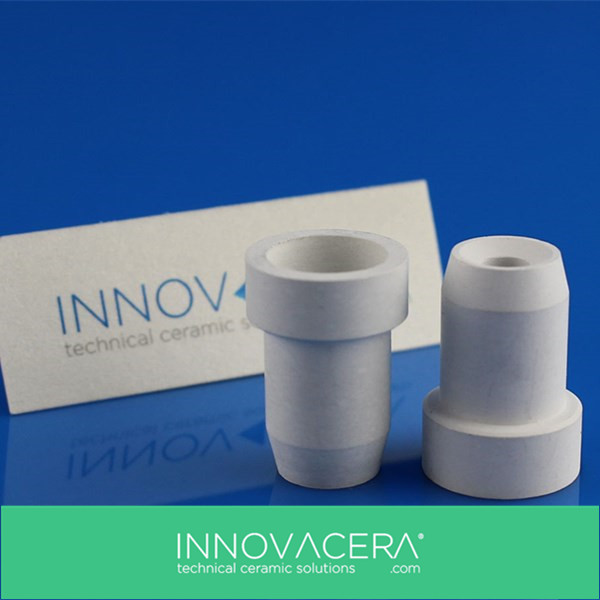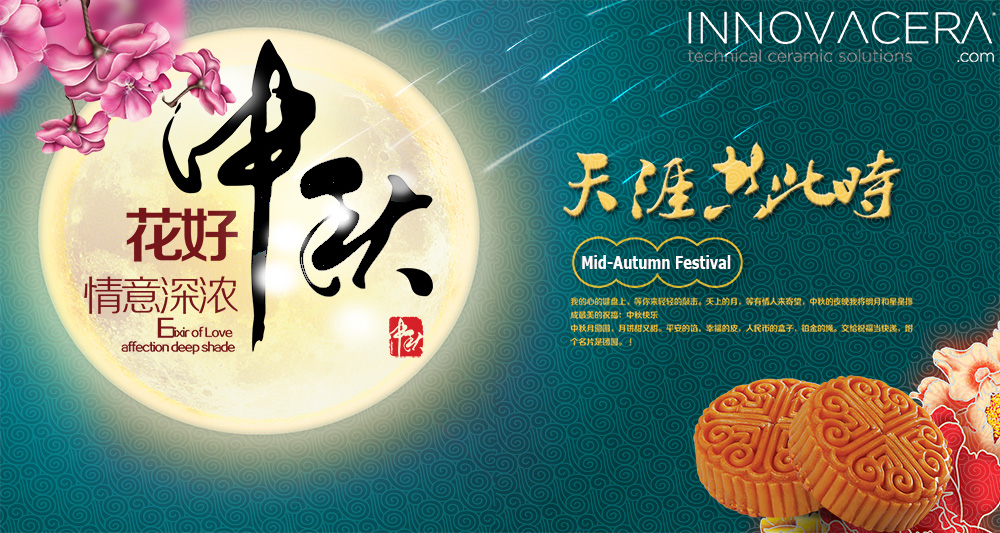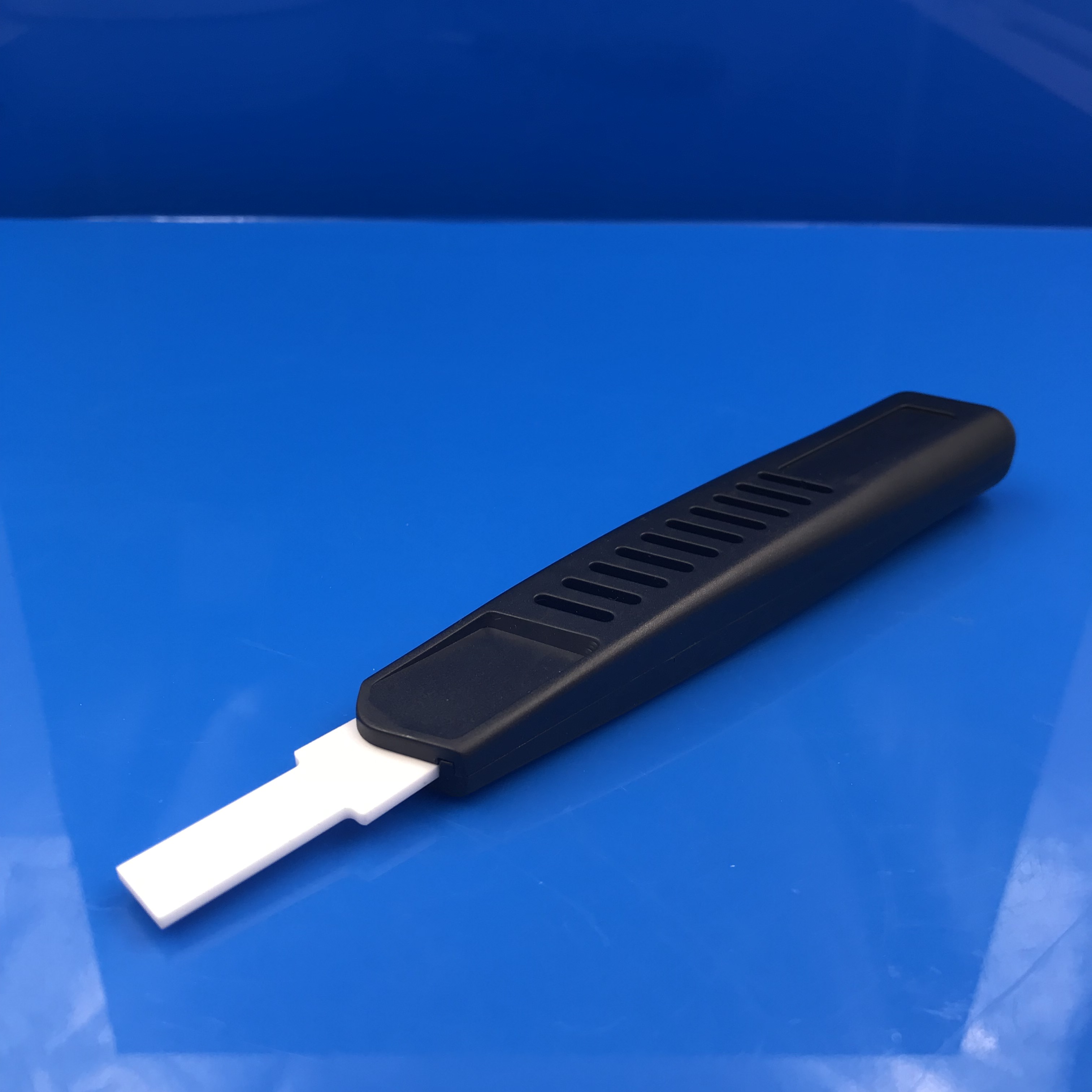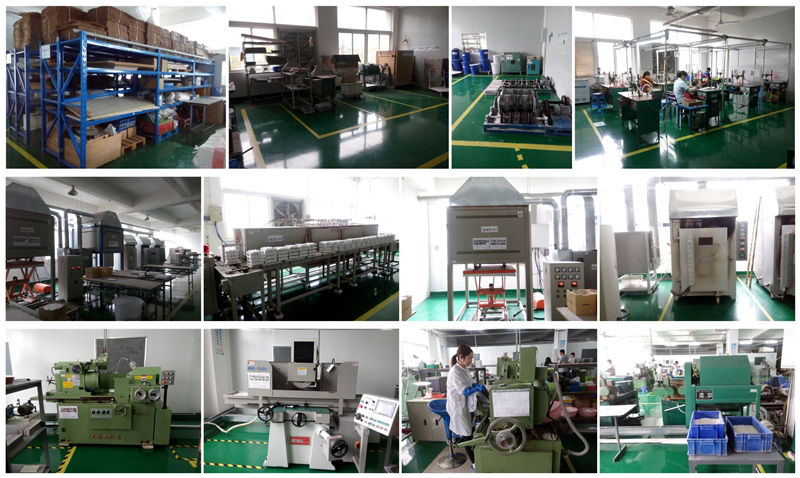
1. Compounding Ingredient
Weigh and mix raw material powder in a certain proportion. In order to guarantee the quality from the first step, we do this step itself instead of buying already-mixed raw material.
2. Drying
Remove the moisture from raw material. Make sure the hardness of the finished product.
3. Ball-milling
Mixing the material while grinding by ball milling machine. The purpose of this step is to reduce the grain size of the powder and to make it fully mixed.
4. Sieving
Sieve to remove the impurity in the powder & dry it. (After this step, the grain size will be tested.)
5. Wax Placing
Heat solid wax into thick liquid. Add the powder and mix them up. Wax helps the ceramic raw powder to shape up. Then pour the mixture into a container, making it cool down and solidify into a solid block in the air.
6. Melting
The mixture solid is preheated to be slightly soft for easier transfer. The mixture is turned into a liquid at 90 ° C, and vacuum is applied. The purpose of vacuuming is to drive away air bubbles in the liquid and mix the slurry evenly. (The viscosity of the raw material will be tested after this step)
7. Forming
Keep the material in low injection machine under 65-70℃, to ensure the material does not solidify. Material is squeezed out from the machine into mold. It will shape up and harden when contacting air. (Mould are placed on ice blocks in order to cool them down. And the air blowing is to dry the mold.)
8. De-waxing and Glue Removing
Put the shaped-up product in the low-temperature room. After standing for a few days, it is sufficiently cooled and hardened, and then transferred to a crucible containing β-Al2O3 powder (the β-Al2O3 powder has an adsorption function, which can adsorb and remove wax or other glue which helps to form, and can be recycled). Then, it is placed in a medium temperature furnace at 1100 ° C for 53 hours, and the wax and glue removing is done after taking out the packaging. The finished product after this step is called pottery.
9. Sintering
Put the product on the setters (the bearing plate requires high-temperature resistance, the temperature should be around 1700 °C), into the high-temperature furnace calcine for 24 Hours (temperature is around 1650-1700 °C, depending on different material requirements), the finished product after this step is called ceramic. Tolerances of finished product are between ±0.1. The high-temperature furnace including a box furnace and a tunnel furnace. The tunnel furnace consumes a large amount of electricity and has a high cost, and is suitable for burning large quantities of products.
10. Cleaning
Firstly use ceramic beads to polish and rub the finished product to remove burrs and make the surface smooth. If there is no special requirement, usually the products are ultrasonically cleaned. Then products can be packed up and ship to our customers. If there are special requirements, the first step is also polished & rubbed through ceramic beads, and then do machine process in due course.
11. Machine
Machine processes include surface grinding, internal/external grinding. The internal grinding machine has a maximum grinding diameter of 100mm and a maximum grinding depth of 150mm. It is mainly achieved by the friction between the grinding wheel and the machining part. The precision can be up to 3μm. (The grinding wheel has different models. different grinding wheels for different precision.)
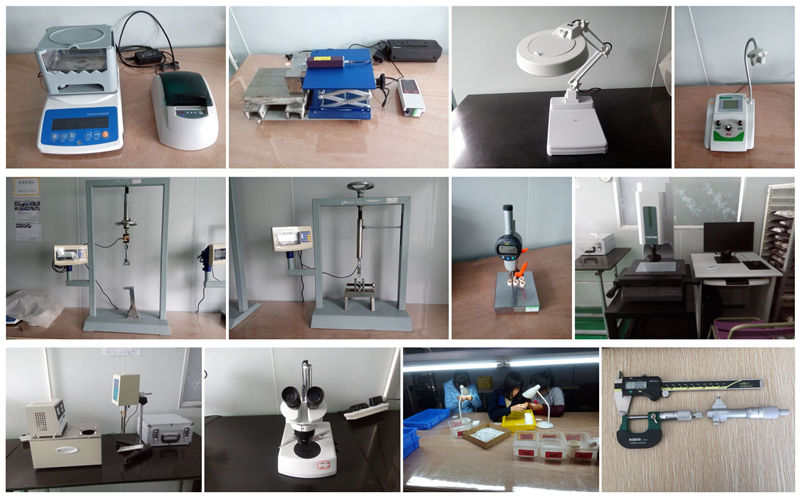
12.Inspection Equipment
a. Two-dimensional detector (detecting the appearance and size of the product);
b. Roughness detector;
c. Density detector;
d. Viscosity detector;
e. Bending and tensile strength tester;
f. Vickers hardness tester;
g. Laser particle size analyzer;
h. Manual inspection.
